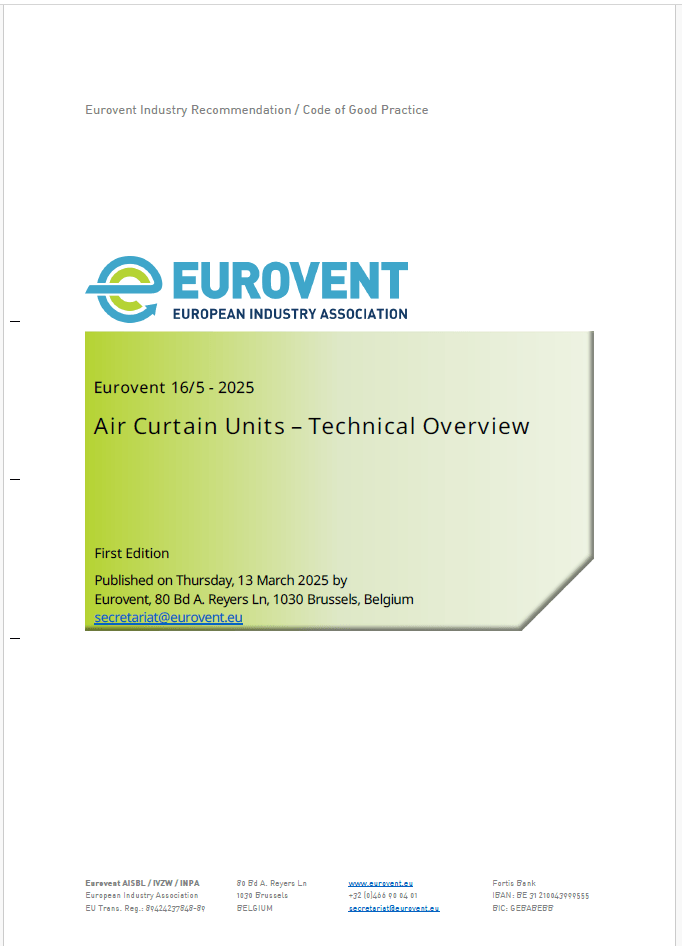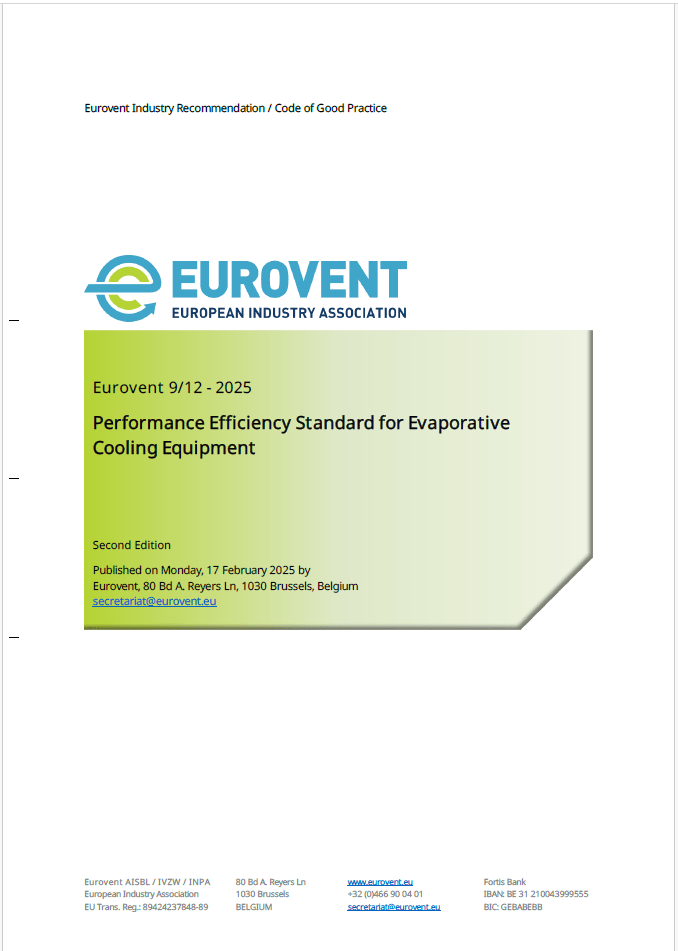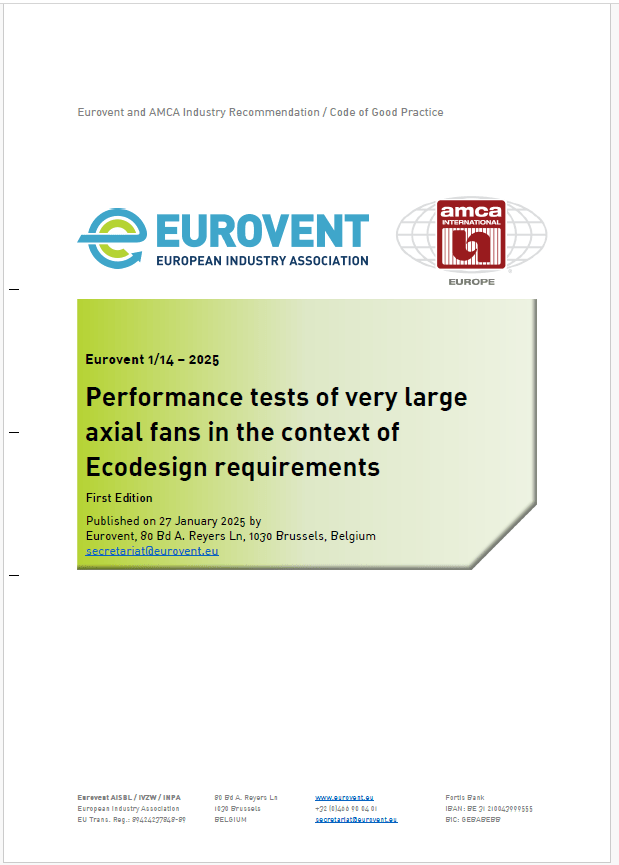Morten Schmelzer, Technical Marketing Director of Systemair Group gives a comprehensive overview of the different terms related to ventilation systems to provide the Middle East market with an understanding of their individual advantages and disadvantages.
Ventilation is the intentional replacement of used indoor air with fresh, outdoor air.
The air is used by the people inhabiting the space, who inhale oxygen (O2) and breathe out carbon dioxide (CO2).
The concentration of CO2 serves as a measure of the quality and freshness of indoor air. The absence of fresh outdoor air results in increased concentrations of CO2, which will lead to building inhabitants suffering from reduced concentration, increased fatigue and, in some cases, headaches and sluggishness.
The advantages and disadvantages of infiltration
Fresh outside air can typically enter the building through infiltration, which is considered unconscious or non-intentional ventilation. This is characterised by outside air entering through the seams and cracks within the facade, pushing the inside air out through the other side. The amount of infiltration must be large enough to bring in adequate fresh outside air and this is dependent on how leaky the facade is, the size of the building and the number of people in the building.
However, infiltration is not constant and cannot be controlled. If the wind is not blowing, there is hardly any infiltration and if the wind is very strong it will quickly start to draft inside. Infiltration is also not always the most efficient solution as it will increase energy consumption for heating in the winter seasons. Also, with infiltration the balance between the amount of indoor and outdoor is not guaranteed.
Increasing infiltration by opening the window
A way to temporarily increase ventilation through infiltration is to manually open a window or door. By consciously making larger openings in the facade, more fresh outside air will flow in, allowing for better ventilation.
An important advantage to opening a window is being able influence the amount of fresh air that enters. More fresh air leads to lower CO2 concentration indoors and reduces the possible concentration of harmful particles.
However, there are major drawbacks to opening windows and doors. First, opening the windows would also allow more pollutants from the outside air, such as fine dust and mosquitoes, to enter, not to mention the noise pollution from outdoor activities.
It also requires much more heating energy when it gets colder, which leads to a drier indoor climate. This is especially problematic during the winter season and makes inhabitants susceptible to respiratory infections. The optimum relative humidity indoors is between 40% and 60%.
In the event opening the windows or doors is not an option and the infiltration is insufficient to address the fresh air supply requirements of the people in a building, there is a need for a ventilation system to ensure that the indoor concentration of CO2 does not become too high.
The table below gives a weighting of the various ventilation options.

The purpose of a ventilation system
A ventilation system facilitates the introduction of fresh outside air in an intentional and controlled manner.
Although installing more fans typically leads to more expensive operations, it is also crucial to helping ensure that ventilation and air flow can be easily controlled. The use of more fans will lead to an increased demand for energy; however, it will also lead to reduced requirement for heating.
If the fans are set up per room, we speak of a decentralised system and if the fans are set up per building it is called a central ventilation system. From central systems, the air is then transported to the various rooms with air ducts, vertically, via shafts, and horizontally, above the suspended ceiling. With balanced ventilation, the outside air is cleaned with fine dust filters and heat recovery, without recirculation taking place.
When weighing the associated cost of installing more fans, it is also important to take note of the benefit that improved ventilation and indoor air quality brings to the people that inhabit the building in terms of reduced absenteeism and more productivity. An especially balanced ventilation will ensure that the conditions in the room are optimal and healthy for people to feel well.
An overview of recirculation
Recirculation is largely 50%-90% reduction of ‘used‘ air. Essentially, the air that is extracted from a room is returned to the same or other rooms. This is done consciously in new systems for clean rooms and operating rooms, where the recirculated air passes through a very good filter, such as HEPA filters, so that the indoor air becomes very clean.
Recirculation systems are also found in older buildings with poorly insulated facade. In order to achieve an even and comfortable indoor climate during winter, more air was circulated than the outside air needed by the people in the building. However, newer buildings are equipped with decentralised recirculation systems, whereby the recirculation was sold by certain suppliers as a kind of heat recovery system to circumvent European legislation.
The meaning of internal leakage
Internal leakage in a central ventilation unit is often confused with recirculation. Following greater awareness surrounding Sick Building Syndrome (SBS) in the 1990s, recirculation systems are now rarely used. SBS was often caused by too little ventilation and too much recirculation to save energy. Together with inadequate maintenance of the systems, this resulted in buildings where inhabitants became ill.
Subsequently, regulations were introduced mandating the use of fully outdoor air systems. These were often provided with heat/moisture recovery in order to limit energy consumption. Now, with certain forms of heat recovery, there can be limited internal leakage from the discharge to the supply air. This leakage usually amounts to less than 0.5% of the air volume if the layout of the unit, especially the position of the fans, is correct.
This can happen if there is significant pressure on the heat recovery device because the exhaust fan is on the ‘wrong‘ side.
In many cases, exhaust fans can be moved, which greatly reduces internal leakage.
Internal leakage can be measured with a tracer gas. It has never been shown that virus particles, for example, can also leak from the discharge to the supply via the heat recovery. It is possible to have a 100% leak-free system, however it can only be achieved by applying a two-element system, with the use of run around coils. These are heat exchangers that are connected to each other in separate supply and exhaust units.
The purpose of circulation
An air conditioner is not a ventilation system but a circulation system that heats or cools the air and, therefore, ensures a pleasant temperature in the room. A VRF system consists of various decentralised air conditioners in different rooms that are linked in an energy-efficient manner to a central heat pump that can provide cooling and heating. Air conditioning systems could be supplemented with local filter units fitted with HEPA filters. These are circulation systems with a fan and a HEPA filter. A HEPA filter captures more than 99,5% of all (virus) particles and, thus, keeps the room clean.
The purpose of air treatment
Air treatment, as the name suggests, refers to the treatment of air before it enters a space. An air treatment system ensures that the supply air is purified, has the correct temperature and, preferably, also has the correct humidity with a sufficiently low CO2– content. Air treatment must not produce too much noise while the system also ensures that the ‘used‘ air is removed from the room with balanced ventilation.
In addition to heat/moisture recovery, an air treatment unit often contains particulate filters, a heater and a cooler, fans and, in some cases, silencers. It also features a section where the air can be humidified in the winter, so that it does not become too dry inside. Air treatment essentially functions to ensure a good and healthy indoor climate and all this is guaranteed in a balanced air handling ‘fresh air ventilation’ unit.
System comparison






















